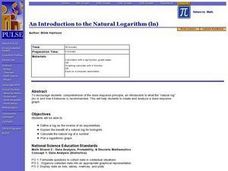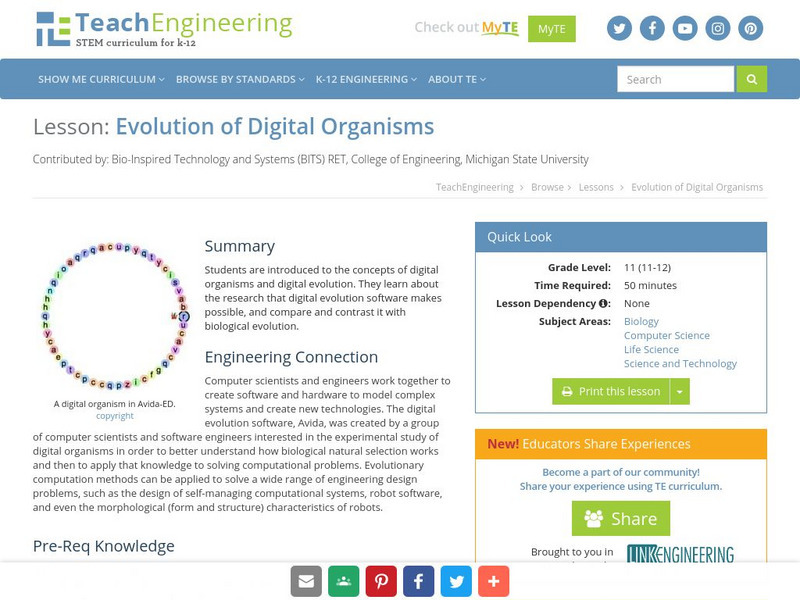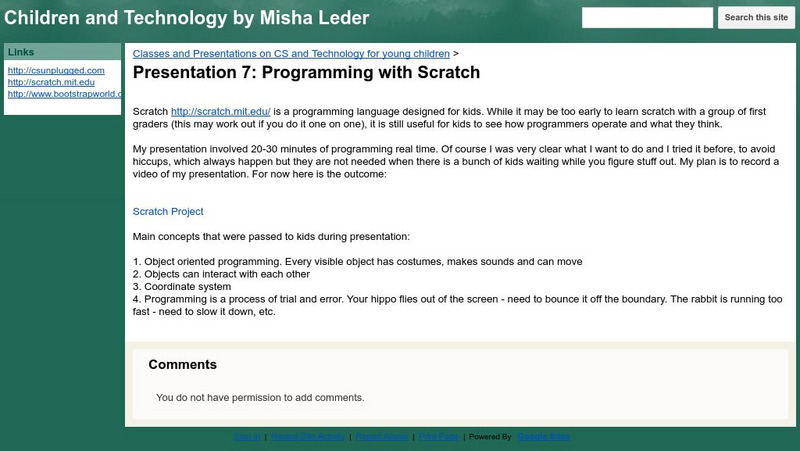Curated OER
An Encyclo-ME-dia for Every Child
Learners create a digital scrapbook that shows information-text and pictures that are specific to each child. They make charts and graphs. They use digital cameras, scanners, software, to write captions, stories, poems, letters, and...
Curated OER
Highway Design for the Future
Eighth graders research highway designs and create a marble maze to illustrate a highway system. They test their designs and write reports defining the project and analyzing the results.
Curated OER
Estimating With Fractions
Seventh graders, exploring methods to estimate fractions, take notes on estimating fractions, 7th graders write letters to explain the process of estimating fractions and mixed numbers to someone who does not know the concept. Students...
Curated OER
Thematic Unit ----Transportation
Young scholars identify and name six modes of transportation. Students name the purpose of each of the six modes of transportation. Young scholars categorize modes of transportation based on where they travel.
Curated OER
An Introduction to the Natural Logarithm (ln)
Students explore the dose response principle, an introduction to what the "natural log" (ln) is and how it behaves. They create and analyze a dose response graph.
Curated OER
Robot Labyrinth
Students design a flowchart for their robotic program. In this physics lesson, students construct a robot that can navigate certain obstacles. They present their program and robots in class.
Curated OER
Create a Timeline
Students make a timeline from the late 1800's to 2000 to mark significant inventions.
Curated OER
Classroom Triangles
Students use bearing measurements to triangulate and determine objects' locations. Working in teams of two or three, students must put on their investigative hats as they take bearing measurements to specified landmarks in their...
Curated OER
Sensor Challenge
Students develop a pseudo code flowchart for their robotic program. In this physics lesson, students construct a robot that can navigate through certain obstacles. They test their robot and present them to class.
Curated OER
Robot Olympics
Young scholars design a robot based on given requirements. In this technology lesson, student test whether their robots can perform certain tasks. They present and discuss their program design.
Curated OER
The Planets Terra Firma
High schoolers explore the theories of the creation of the universe and examine the properties of celestial bodies. They analyze the relationship between the sun, Earth and the other planets.
Curated OER
Does the falling tree make a sound if no one if there to hear it? (or communication via encryption)
Young scholars explore encryption. They discuss the importance of cryptography in our daily lives. Students use games and cryptography to discover transformational geometry and modulo systems. They design their own encryption puzzles...
Curated OER
Robot Turning Lab
Students design a robot that can turn 90 degrees. In this robotics instructional activity, students explain the applications of their invention. They present their design in class.
TeachEngineering
Teach Engineering: Program Analysis Using App Inventor
In computer science, program analysis is used to determine the behavior of computer programs. Flow charts are an important tool for understanding how programs work by tracing control flow. Control flow is a graphical representation of...
TeachEngineering
Teach Engineering: Curiosity Killed the App
Students gain experience with the software/system design process, closely related to the engineering design process, to solve a problem. First, they learn about the Mars Curiosity rover and its mission, including the difficulties that...
TeachEngineering
Teach Engineering: Hidden in Plain Sight
Steganography is the science and art of hiding messages in plain sight so only the sender and intended recipient know the existence of a message. Steganography can be characterized as security through obscurity. Through this lesson,...
TeachEngineering
Teach Engineering: Evolution of Digital Organisms
Students are introduced to the concepts of digital organisms and digital evolution. They learn about the research that digital evolution software makes possible, and compare and contrast it with biological evolution.
Curated OER
Google for Education: Children and Technology: Programming in Scratch
Students experience what is it like to be computer programmers through the children's computer coding game, Scratch, developed by MIT engineers.
Other
Sprk: Orb Basic Lesson 2 [Pdf]
Young scholars will use Sphero to explore the computer science concepts of variables and conditionals (ifstatements). They will use OrbBasic, which is a text-based programming language for the Sphero. They will write a simple program...
Other
Sprk: Orb Basic Lesson 3 [Pdf]
Students will use Sphero to explore the computer science concepts of reading sensors and storing data in variables. They will use OrbBasic, which is a text-based programming language for the Sphero.They will write a simple program that...
Google
Google for Education: Exploring Computational Thinking: What Is Ct?
Learn about computational thinking which involves a set of problem-solving skills and techniques that software engineers use to write programs that underlie the computer applications you use such as search, email, and maps.
PBS
Pbs Teachers: Earth's Warming Climate: Are We Responsible?
We obviously don't want to feel responsible for the warming climate, but are we? In this lesson plan you will analyze CO2 data sets and study barriers involved in teaching about global climate change. PBS TeacherLine also provides a...


















![Sprk: Orb Basic Lesson 2 [Pdf] Lesson Plan Sprk: Orb Basic Lesson 2 [Pdf] Lesson Plan](https://d15y2dacu3jp90.cloudfront.net/images/attachment_defaults/resource/large/FPO-knovation.png)

